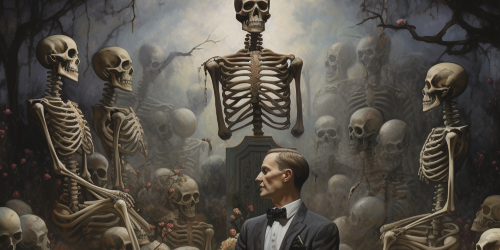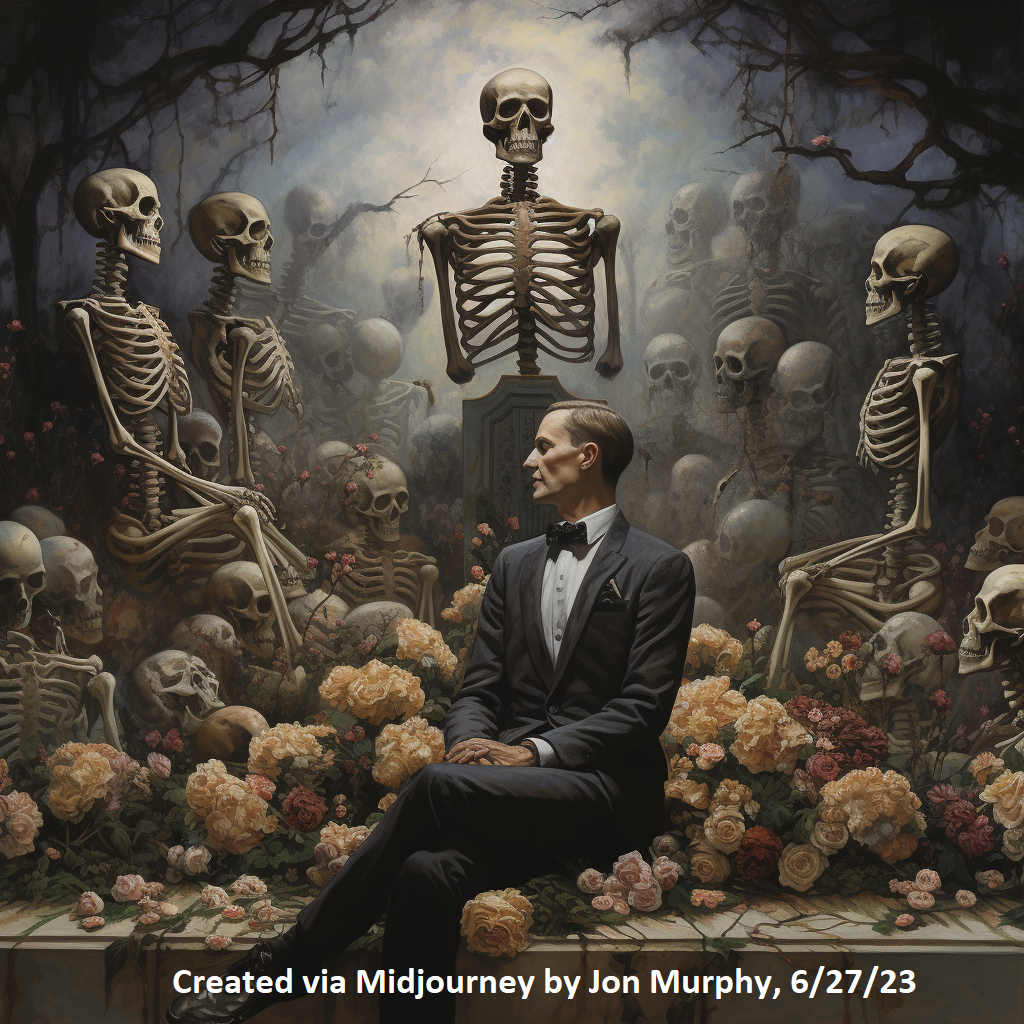We sympathize even with the dead
October 31, 2023

One of our long-time contributors let's his imagination roam with some help from a generative art program.

One of our long-time contributors let's his imagination roam with some help from a generative art program.
We sympathize even with the dead, and overlooking what is of real importance in their situation, that awful futurity which awaits them, we are chiefly affected by those circumstances which strike our senses, but can have no influence upon their happiness. It is miserable, we think, to be deprived of the light of the sun; to be shut out from life and conversation; to be laid in the cold grave, a prey to corruption and the reptiles of the earth; to be no more thought of in this world, but to be obliterated, in a little time, from the affections, and almost from the memory, of their dearest friends and relations. (TMS I.i.1.10, pg 12).

I chose this scene in the opening pages of the Theory of Moral Sentiments not only because it appeals to my macabre-loving soul, but also it builds sympathy as something we do for ourselves. The dead (represented by the skeletons) are indifferent to the flowers, the man conversing, or the tombstones that surround them. Our sympathy for the dead arises not from anything they do or say, but by “lodging…our own living souls in their inanimated bodies.”
I created this image using the AI art generator bot Midjourney (version 4) using the prompt “/imagine sympathy with the dead.”
Are you scared yet?
Amy Willis' What's Spooky About Smith?
Edward J. Harpham's Reflections on Smith’s Sympathy and the Dread of Death, Part 1 and Part 2
Lecture by Dr. Caroline Breashears, Adam Smith and the Horror of Frankenstein
Duane Kelly's play about the deaths of David Hume and Adam Smith, Enquiry Concerning Hereafter
Are you scared yet?
Amy Willis' What's Spooky About Smith?
Edward J. Harpham's Reflections on Smith’s Sympathy and the Dread of Death, Part 1 and Part 2
Lecture by Dr. Caroline Breashears, Adam Smith and the Horror of Frankenstein
Duane Kelly's play about the deaths of David Hume and Adam Smith, Enquiry Concerning Hereafter